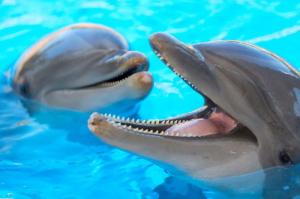How old is a dolphin? Loro Parque participates in a project to determine the age of cetaceans by studying their DNA
Scientists involved in the project have developed an odontocete epigenetic aging clock, which can be used for species conservation efforts
Scientists involved in the project have developed an odontocete epigenetic aging clock which can be used for species conservation efforts by providing a mechanism for estimating the age of free ranging odontocetes from either blood or skin samples.
These epigenetic clocks work by tracking additions to the DNA known as methylation, a small chemical modification that is reversible and does not alter the letters of the DNA itself, although it can change the way genes ‘switch on and off’. This type of phenomenon is what is called epigenetics.
When it comes to ageing, DNA methylation changes predictably with increasing age, so by using these epigenetic clocks, the age of odontocetes can be known quite accurately.
In this research, it is key that different species could be included and studied, which is only possible thanks to the keeping of animals under human care because it allows scientists to know their birth dates, which is key to validate the correlation between the methylation rate and age. Therefore, for example, the orcas and dolphins at Loro Parque have provided invaluable information that could later be applied to the study of wild Norwegian killer whales, which will improve existing knowledge of them, thus leading to ensuring their protection and conservation in the wild.
You can access the full paper via this link: https://go.nature.com/34HDgwl
Natalya Romashko
Communications Department, Loro Parque
+34 922 37 38 41
email us here
Legal Disclaimer:
EIN Presswire provides this news content "as is" without warranty of any kind. We do not accept any responsibility or liability for the accuracy, content, images, videos, licenses, completeness, legality, or reliability of the information contained in this article. If you have any complaints or copyright issues related to this article, kindly contact the author above.


